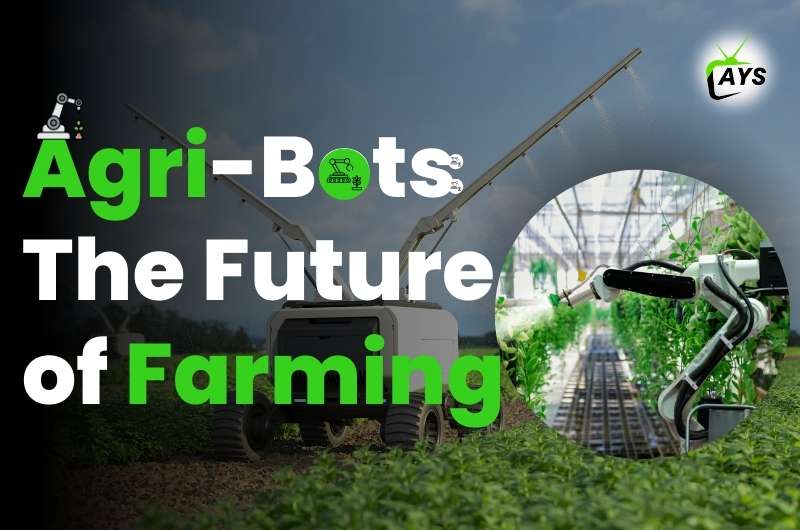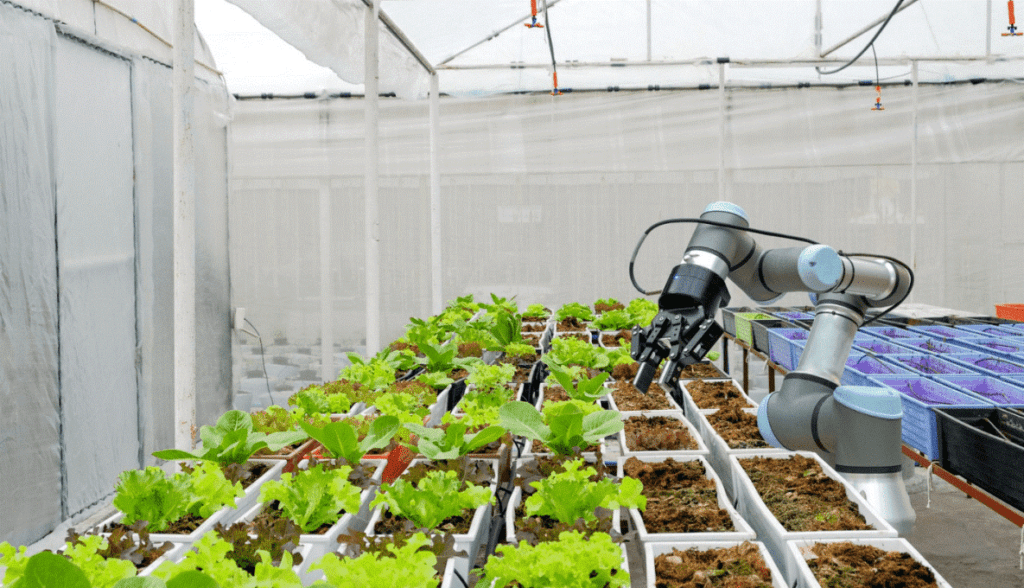


Robotics in Agriculture: Future of Farming

- By Ragini Kumari
- (0) comments
- April 4, 2025
Robotics in Agriculture: Future of Farming
It is an understood fact that one of the most significant industries across the world is agriculture. And by 2050 almost 56% more food will be needed to be produced than in 2010 to feed the world’s growing population, according to the reports.
This must impose some pressure on the agri sector leading to the introduction of advanced technologies in farming. Farmers are utilizing such technologies like agri robots, to boost food production and reduce waste. This article presents you the most burning topic in current scenario, the robotics in agriculture.
So, let’s explore about this blog how tech-driven Agriculture robots are reshaping India’s farming landscape.
Agriculture Robots
Robots are the mechanical devices which are controlled by humans, semi-autonomous or autonomous. These are tools that were specially programmed to accomplish certain tasks, that frequently involve physical movement and interaction with the world around them.
➢ Agriculture robots are meant for the specific tasks to be performed in the farming operations. These are designed to perform several activities which resulted in the lowering of human interventions. This also increases the efficiency of the activities.

➢ These robots have sensors, cameras and AI systems to navigate fields, plant seeds, monitor crop health and even harvest produce.
➢ Agriculture robots have specialized mechanism to perform weeding, pruning, fertilizer application and pesticide spraying. Theses robots are so efficient that they reduce waste production and work with so precision.
➢ Agricultural robots, or agri-bots are the calibrated machinery constructed specifically to do a variety of farming tasks, such as planting seeds, watering crops and harvesting produce. Agri bots can use advanced technologies like artificial intelligence (AI), machine learning, and GPS navigation to speed up and lessen the labor-intensive nature of farming activities.
➢ It is anticipated that agricultural robots would improve farming’s sustainability, accuracy and production. Also, they need to cut down on the necessity for individuals to work. Drones are used to gather sensor data and aerial imagery on farms to identify issues that might arise. To reduce the need for human work, autonomous tractors, cultivators and plows are being developed.
Agriculture Robotics
➢ This is the science dealing with the production of robots. It provides a significant opportunity for transforming the farming industry, enhancing productivity and promoting sustainability.
➢ As the global food demand increases & challenges like labor shortage appears, robotics offer efficient solutions to these problems.
➢ There are several prospects in India for agricultural robotics, particularly in areas like precision farming, automated harvesting, targeted pesticide application, crop monitoring, and weed management. Farmers may utilize artificial intelligence (AI) and sensor-equipped robots to make data-driven decisions that optimize resource use, increase yield, and improve sustainability.
➢ Robots also help reduce the need for harmful chemicals by applying fertilizers and pesticides with greater precision, minimizing environmental impact. Additionally, autonomous machines can handle tasks like irrigation management, allowing for water conservation in regions facing drought.
➢ As these technologies evolve, agriculture robotics opens up avenues for new business ventures, research, and development in automation, AI and IoT. Startups and established companies are investing heavily in innovation, making it a rapidly growing sector with long-term potential in global food production.
Factors driving the growth of Agricultural Robotics in India
The growth of agricultural robotics in India is driven by several key factors:
i. Labour shortages in rural areas push for automation to maintain productivity.
ii. The need for precision farming is rising due to water scarcity, soil degradation and climate change, making use of robots essential for efficient resource management.
iii. The Indian government’s focus on digitizing agriculture through initiatives like “Digital India” encourages tech adoption.
iv. The demand for increased crop yield and reduced chemical usage drives the adoption of smart technologies.
v. Lastly, the increasing investment in agri-tech startups fosters innovation in robotics, accelerating growth in the sector.
Challenges to adaptation of robots in Agriculture
➢ The acceptance of the robots in agriculture faces several challenges like it has high initial costs and some complex processes to install them in the main field. These issues are faced by particularly small-scale farmers.
➢ Additionally, the diverse and unpredictable nature of agricultural environments, such as varying terrains and weather conditions, makes it difficult for robots to perform consistently. There’s also resistance to change from traditional farming practices.
Potential Solution to overcome these challenges
➢ To overcome challenges in agricultural robotics, solutions include reducing costs through scalable, modular robot designs and government subsidies or funding for farmers. Developing user-friendly interfaces and providing training programs can address the skills gap.
➢ Partnerships between tech companies, startups and agricultural institutions can help improve infrastructure and tailor robots for local conditions. Governments can use R&D to create versatile and cost-effective robots which are suited for various crops and terrains.
➢ Also, enhancing internet connectivity in rural areas and promoting public-private collaborations can facilitate wider technology access. Finally, creating a supportive ecosystem with accessible financing options will help small farmers adopt these innovations.


Content Writer